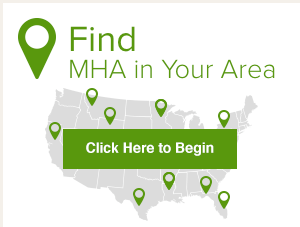You are here
In the Aftermath of the Marysville Shooting
October 27, 2014
By Paul Gionfriddo, President/CEO
I was sitting at my desk when the news broke on Friday afternoon that a fifteen year old student at Marysville-Pilchuck High School in Washington had opened fire in the school cafeteria, killing at least one other student before taking his own life as well.
Another fourteen year old died over the weekend, bringing the death toll to three – all young teenagers.
It is hard to know what to make of these kinds of tragedies, because we don’t really understand them. The shooter, Jaylen Fryberg, was said to be popular and well-liked. The victims – two of whom remain in critical condition – were his family and friends. Some form of bullying may have been involved, but no one had any reason to believe that when he walked into school on Friday he intended anyone harm.
In recent years, shootings – whether or not they are related to a mental illness in the shooter (and most frequently they are not) – have shone a bright light on how poorly we handle mental health concerns in our country.
Half of all mental illnesses manifest by the age of fourteen – roughly the age of Jaylen Fryberg and his friends on the day that they died. And yet, it typically takes ten years from the time symptoms first manifest to the time we get an accurate diagnosis and treatment.
Suppose for the moment – and we do not know this today – that Jaylen Fryberg’s actions were the result of an undiagnosed mental health concern. Were there other signs of such a concern present in the days, weeks, and years leading up to the Friday he died?
In hindsight, some people think so. A week before he died, he wrote on Twitter that “I know it seems like I‘m sweating it off, but I’m not. And I won’t ever be able to.”
It’s hard to say what that implies, but it hints that there’s really only one course of action to prevent tragedies like this one – early identification and early intervention before crises occur.
At Mental Health America, we believe strongly that we need to intervene long before people die as a result of their mental health condition or someone else’s. We need to think of mental health concerns in the same way we do other chronic conditions. We need to screen early and often and – when we detect concerns – we need to stop waiting until they reach Stage 4 to do something about them.
Our screening tools – at www.mhascreening.org – are available online to anyone who is concerned about whether they, a family member, or a friend has a mental health problem. More than 150,000 screenings have been completed since the beginning of May, and a thousand more are completed every day.
There are things we can do to prevent both crises and tragedies related to mental illnesses and to promote recovery – and we think that both state and federal legislators ought to start paying a lot more attention to these, and less attention to what we do to or with people after they reach the late stages of a disease process.
Because by then, it is often too late to make much of a difference.
This week, the children and young adults of Marysville are starting down a new path, leading lives that will be affected by the trauma they all experienced last Friday. So the question we must ask ourselves is this: Will we act on their behalf today, or will we wait ten years, until some of them are in crisis, before we do?







Add new comment